


 الفيزياء الكلاسيكية
الفيزياء الكلاسيكية
 الكهربائية والمغناطيسية
الكهربائية والمغناطيسية
 علم البصريات
علم البصريات
 الفيزياء الحديثة
الفيزياء الحديثة
 النظرية النسبية
النظرية النسبية
 الفيزياء النووية
الفيزياء النووية
 فيزياء الحالة الصلبة
فيزياء الحالة الصلبة
 الليزر
الليزر
 علم الفلك
علم الفلك
 المجموعة الشمسية
المجموعة الشمسية
 الطاقة البديلة
الطاقة البديلة
 الفيزياء والعلوم الأخرى
الفيزياء والعلوم الأخرى
 مواضيع عامة في الفيزياء
مواضيع عامة في الفيزياء|
Read More
Date: 18-8-2016
Date: 2-8-2016
Date: 22-8-2016
|
Parallel Plate Capacitor in Dielectric Bath
A parallel plate capacitor with square plates of side L and plate separation d is charged to a potential V and disconnected from the battery. It is then vertically inserted into a large reservoir of dielectric liquid with relative dielectric constant and density until the liquid fills half the space between the capacitor plates as shown in Figure 1.1.

Figure 1.1
a) What is the capacitance of the system?
b) What is the electric field strength between the capacitor plates?
c) What is the distribution of charge density over the plates?
d) What is the difference in vertical height between the level of liquid within the capacitor plates and that in the external reservoir?
SOLUTION
a) The capacitance of the parallel plate and dielectric system is simply the sum of two capacitors in parallel:

b) The charge is constant as the plates are lowered into the dielectric bath, but the potential between the plates is not. After charging, Q = C0V. Lowering the plates into the fluid to a height L/2 changes C from C0 to C0(1 + ε)/2. The new potential V' may be found from

So
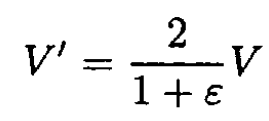
Since |V| = |E| d
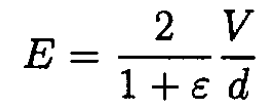
c) From Maxwell’s equation we find that D = 4πσ, but D = εE, so
we find that D = 4πσ, but D = εE, so
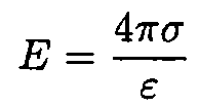
From (b), we obtain

where the fluid is between the plates. The surface charge density where there is no fluid is

d) To determine the height difference between the liquid between the plates and in the external reservoir, we consider the sum of the electrical and gravitational potential energies of the capacitor and fluid. Let the height difference be given by h and a small change in the height be produced by ζ (see Figure 1.2) . The gravitational potential energy is given by the integral

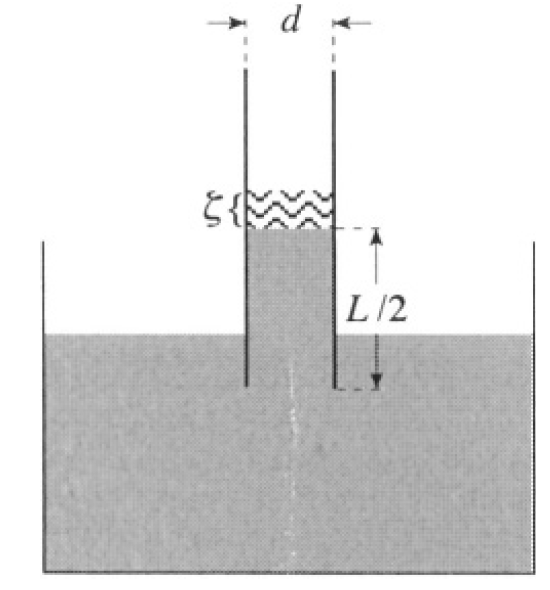
Figure 1.2
so that the total potential energy
 (1)
(1)
Again we have written the electrical potential energy in terms of the charge Q, since the potential changes as the fluid rises or falls. Writing out the capacitance, we get
 (2)
(2)
At equilibrium, the force on the liquid is zero, or the derivative of the potential energy is zero

At equilibrium, i.e., ζ = 0,
 (3)
(3)
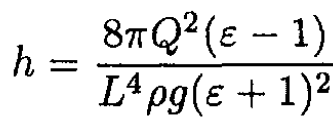 (4)
(4)
Rewriting (4) in terms of V, we obtain

Alternatively, we can use the result (6) and equate the force
 (5)
(5)
to the weight of the dielectric
 (6)
(6)
From (5) and (6) we find

as in (4).



|
|
|
|
علامات بسيطة في جسدك قد تنذر بمرض "قاتل"
|
|
|
|
|
|
|
أول صور ثلاثية الأبعاد للغدة الزعترية البشرية
|
|
|
|
|
|
|
مدرسة دار العلم.. صرح علميّ متميز في كربلاء لنشر علوم أهل البيت (عليهم السلام)
|
|
|